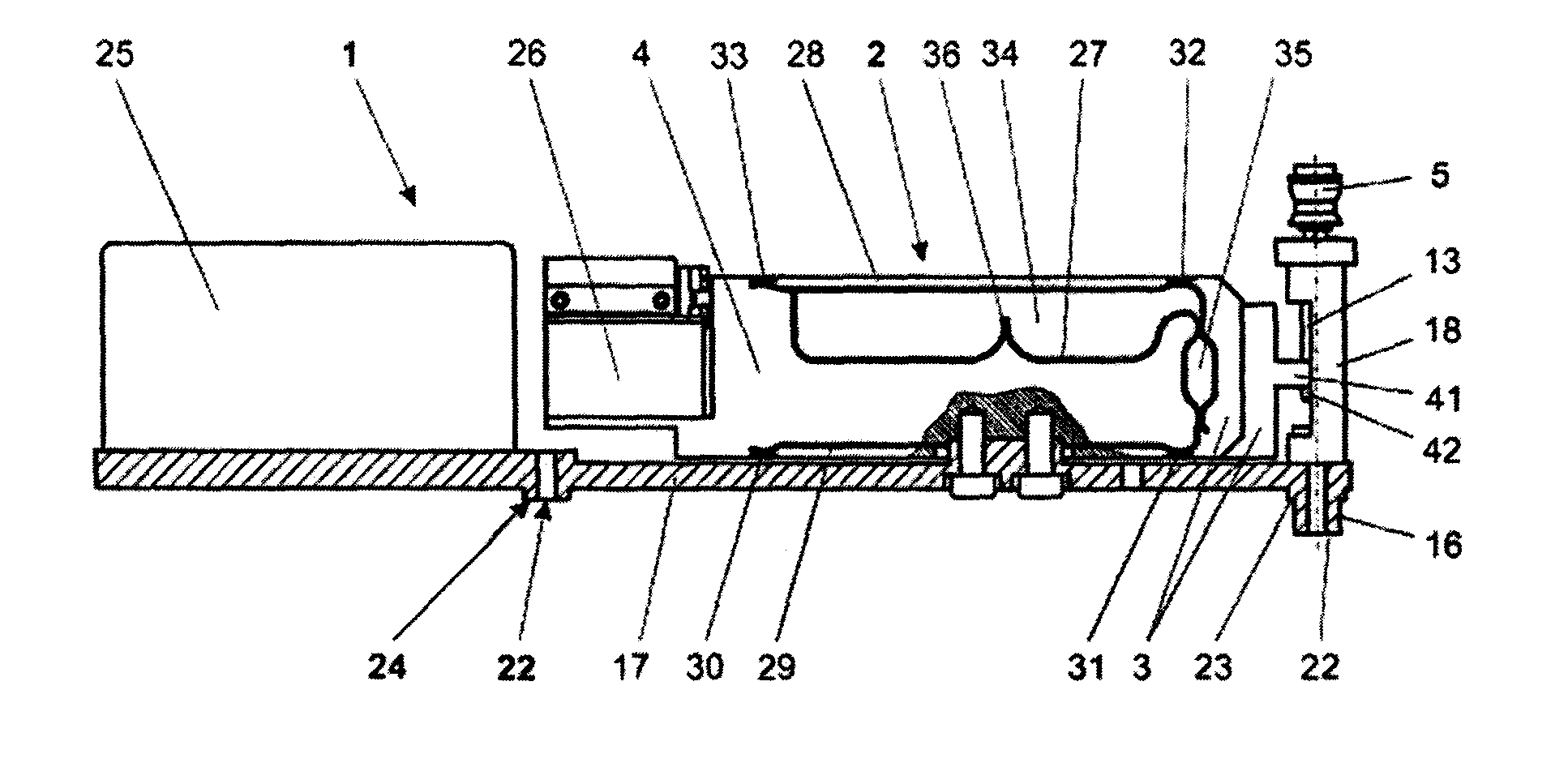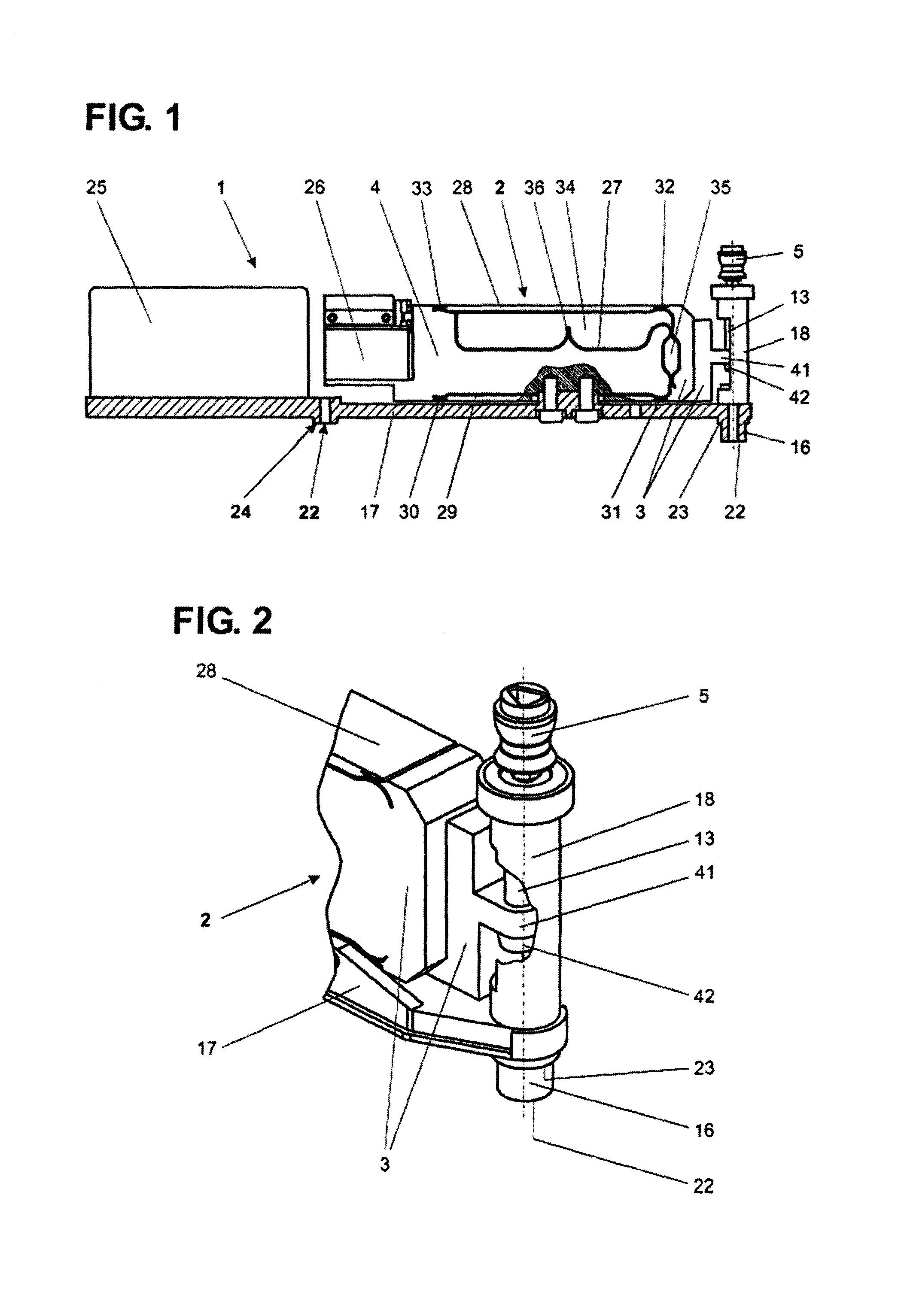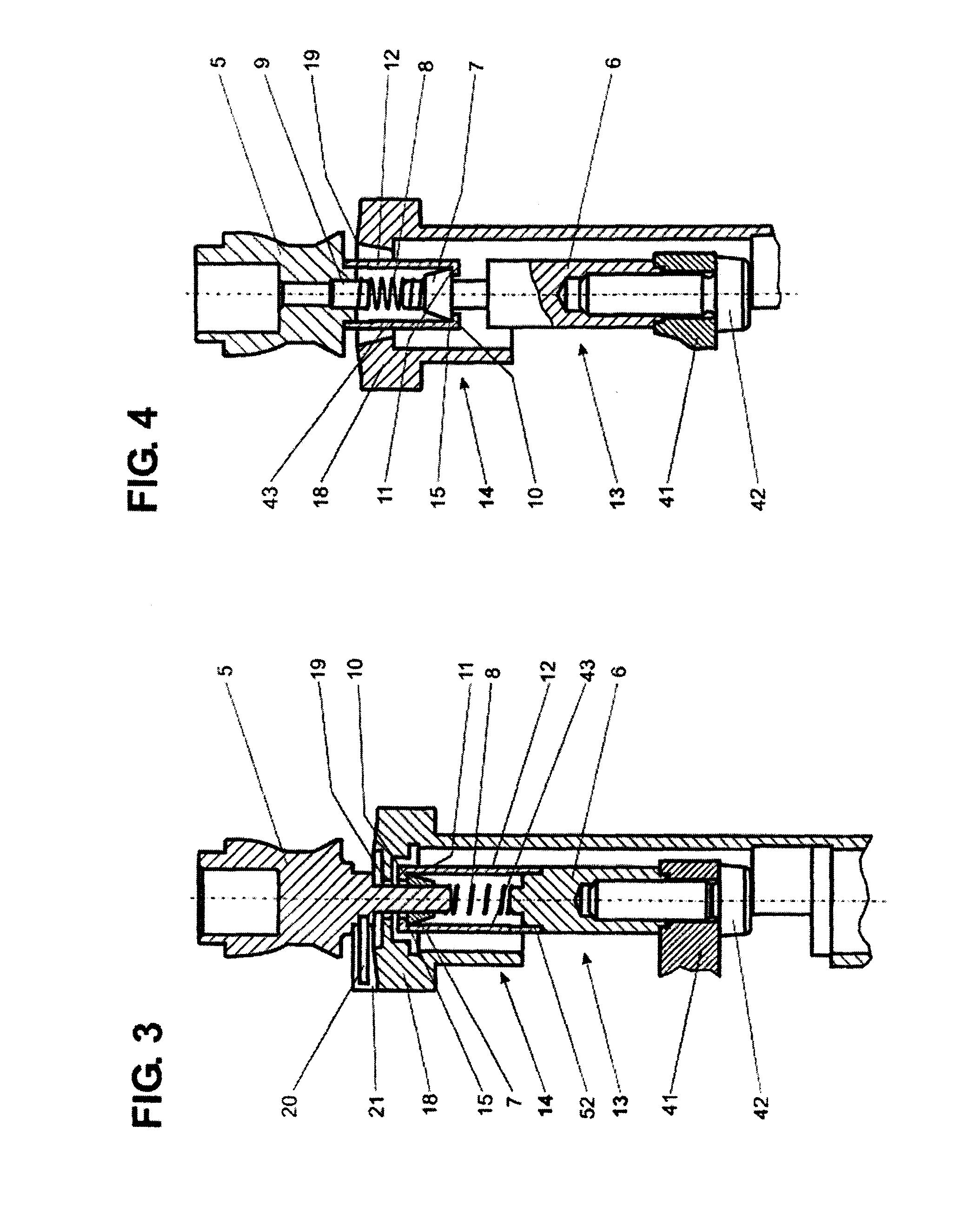Weighing module with precisely-positionable overload protection device
a protection device and weighing module technology, applied in the field of weighing modules, can solve the problems receiving device exposed, damage to the sensitive weighing cell mechanism, etc., and achieve the effect of affecting the weighing resul
- Summary
- Abstract
- Description
- Claims
- Application Information
AI Technical Summary
Benefits of technology
Problems solved by technology
Method used
Image
Examples
Embodiment Construction
[0040]FIG. 1 illustrates a weighing module 1 from which the housing top has been removed. Installed on a floor part 17 are a weighing cell 2 with its force-compensation device 26, and the signal-processing module 25. The weighing cell 2 includes a force-transmitting mechanism formed out of a monolithic, substantially brick-shaped material block in which distinct material portions are separated from each other by material-free spaces in the form of narrow linear cuts 27 traversing the material block perpendicular to the plane of its largest lateral surfaces. The material portions form a parallelogram with an upper parallelogram guide 28 and a lower parallelogram guide 29, one parallelogram leg forming a stationary portion 4, and a vertically displaceable parallelogram leg forming the load-receiving portion 3. The parallelogram legs 3, 4 and the parallelogram guides 28, 29 are connected to each other through flexible connecting portions 30, 31, 32, 33 which are of a concave shape, del...
PUM
 Login to View More
Login to View More Abstract
Description
Claims
Application Information
 Login to View More
Login to View More - R&D
- Intellectual Property
- Life Sciences
- Materials
- Tech Scout
- Unparalleled Data Quality
- Higher Quality Content
- 60% Fewer Hallucinations
Browse by: Latest US Patents, China's latest patents, Technical Efficacy Thesaurus, Application Domain, Technology Topic, Popular Technical Reports.
© 2025 PatSnap. All rights reserved.Legal|Privacy policy|Modern Slavery Act Transparency Statement|Sitemap|About US| Contact US: help@patsnap.com



